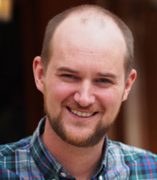
David Reed, PhD
Associate Professor (tenured)
Oral Biology
Contact
Address:
UIC College of Dentistry 801 S. Paulina Street, IL 60612
Email:
Selected Publications
The Biomechanics of Mastication
Reed, David A., and Callum F. Ross. “The influence of food material properties on jaw kinematics in the primate, Cebus.” Archives of Oral Biology 55.12 (2010): 946-962.
Ross, Callum F., David A. Reed, Rhyan L. Washington, Alison Eckhardt, Fred Anapol, and Nazima Shahnoor. “Scaling of chew cycle duration in primates.”American journal of physical anthropology 138, no. 1 (2009): 30-44.
Ross, C. F., A. L. Baden, J. Georgi, Anthony Herrel, K. A. Metzger, D. A. Reed, Vicky Schaerlaeken, and M. S. Wolff. “Chewing variation in lepidosaurs and primates.” The Journal of Experimental Biology 213, no. 4 (2010): 572-584.
Ross, Callum F., Rhyan L. Washington, Alison Eckhardt, David A. Reed, Erin R. Vogel, Nathaniel J. Dominy, and Zarin P. Machanda. “Ecological consequences of scaling of chew cycle duration and daily feeding time in Primates.” Journal of human evolution 56, no. 6 (2009): 570-585.
The Evolution and Development of the Temporomandibular Joint
Reed, D.A.; Scapino, R.; Ross, C.F.; Chen, D.; Diekwisch, T.H. Developmental and evolutionary perspectives on fibrous cartilage in TMJ tissue engineering. Treatment of TMDs: Bridging the Gap Between Advances in Research and Clinical Patient Management. (2013) Quintessence Publishing. Chicago, IL
Finite Element Analysis and Material Properties
Reed, David A., Laura B. Porro, Jose Iriarte-Diaz, Justin B. Lemberg, Casey M. Holliday, Fred Anapol, and Callum F. Ross. “The impact of bone and suture material properties on mandibular function in Alligator mississippiensis: testing theoretical phenotypes with finite element analysis.” Journal of Anatomy 218, no. 1 (2011): 59-74.
Education
- University of Chicago, PhD, Integrative Biology, 2012
- Postdoctoral research scholar, University of Illinois at Chicago, Brodie Laboratory for Craniofacial Genetics, 2012-2013
Research Currently in Progress
My research focuses on understanding how the material properties of skeletal tissue are formed during development, are maintained throughout life, and change as we age. To study this, we look at the relationship between tissue growth and tissue mechanics from both a developmental and disease model perspective. We are particularly interested in the tissues of the orofacial skeleton. To study this complex interaction, we approach the problem at multiple scales. We have ongoing projects investigating the impact of full joint kinematics on lesion formation and tissue contact stresses, the biotribology of superficial layer articular cartilage, and the resulting changes in cell-matrix interactions. We are currently working on understanding how variation in the pattering of enamel crystallite influences fracture mechanics and how variation in mechanobiological signaling regulates cartilage homeostasis in the temporomandibular joint.
Mechanobiology of mandibular condylar cartilage
Cartilage homeostasis is a carefully choreographed balance between anabolic and catabolic activities. We work on the mechanobiological mechanisms that regulate this growth and degeneration. Specifically, we are interested in understanding how chondrocytes interact with the extracellular matrix and transduce mechanical forces into biochemical signals. There is good reason to believe that this pathway plays a very important role in both development and the progression of degenerative diseases like osteoarthritis.
Free body analysis of the orofacial skeleton
From a solid mechanics perspective, the orofacial skeleton is just a system of forces acting on a rigid body in equilibrium. This system of forces can be reduced to a single resultant force and a coupling moment that maintains the equivalent translation and rotation of the original system of forces. We have derived a series of equations using this approach that allow us to calculate joint reaction forces and bite force over a wide range of musculoskeletal configurations. We are using this model to understand how free body mechanics has shaped the evolution and development of the mammalian orofacial skeleton.